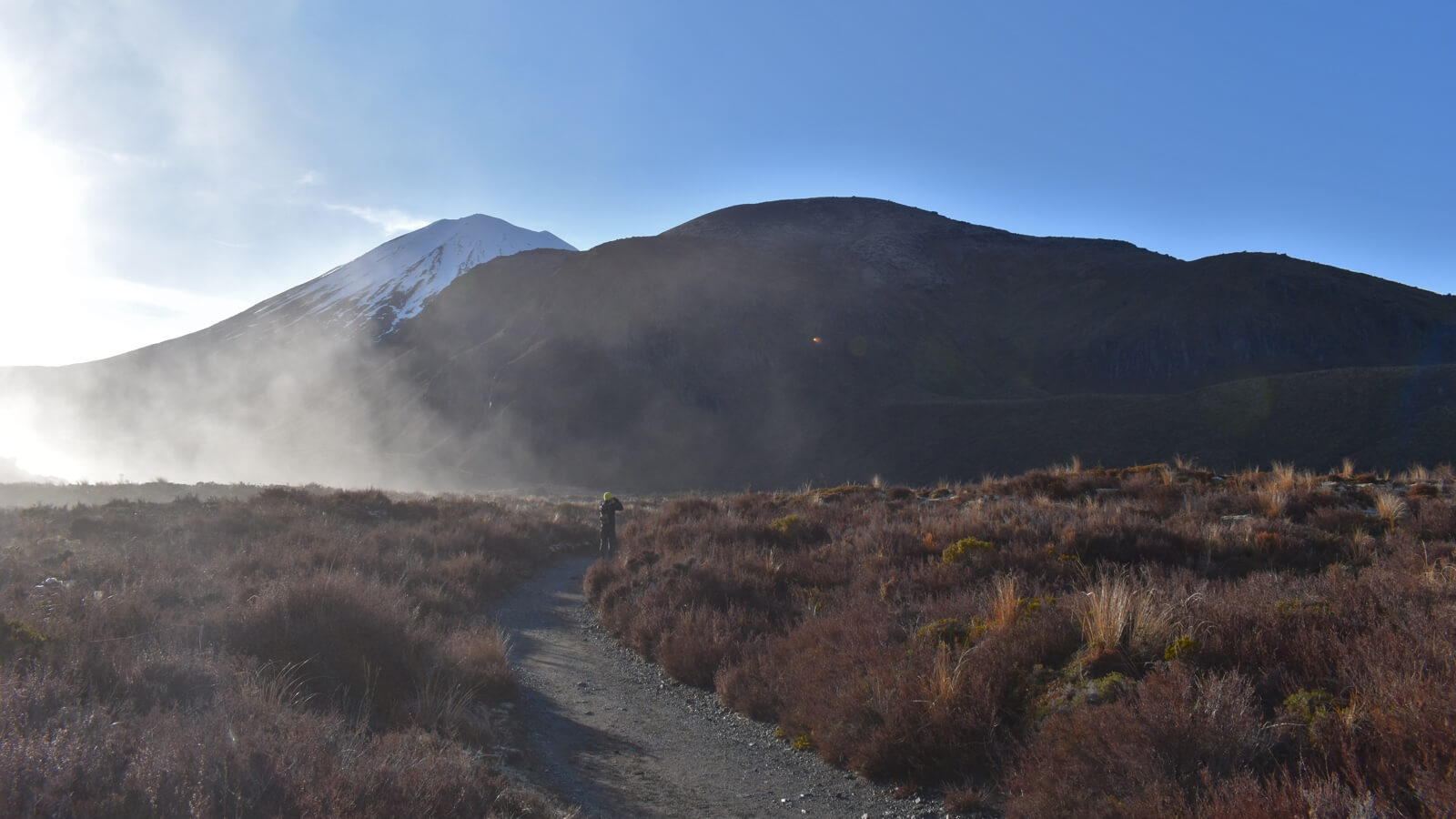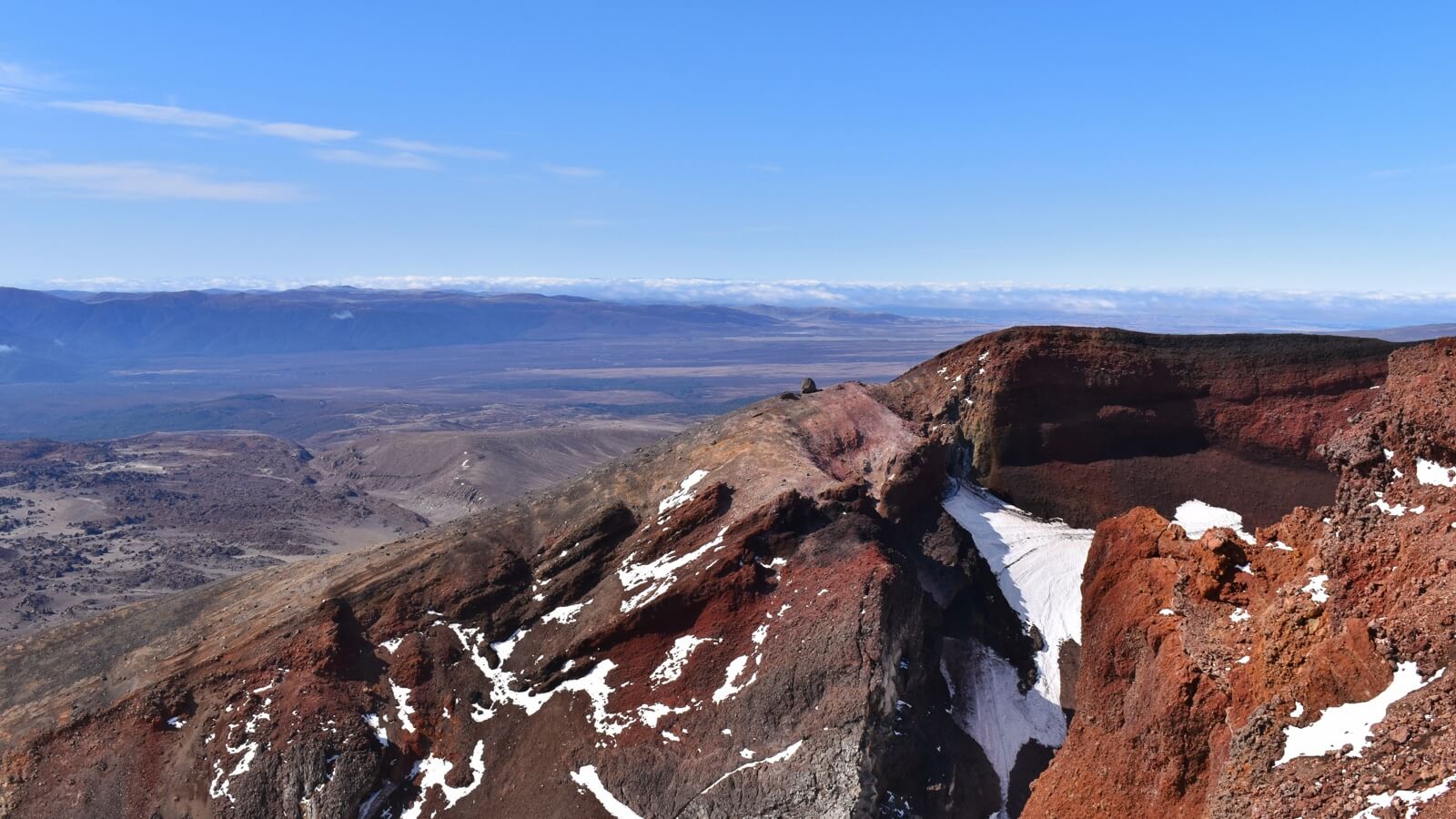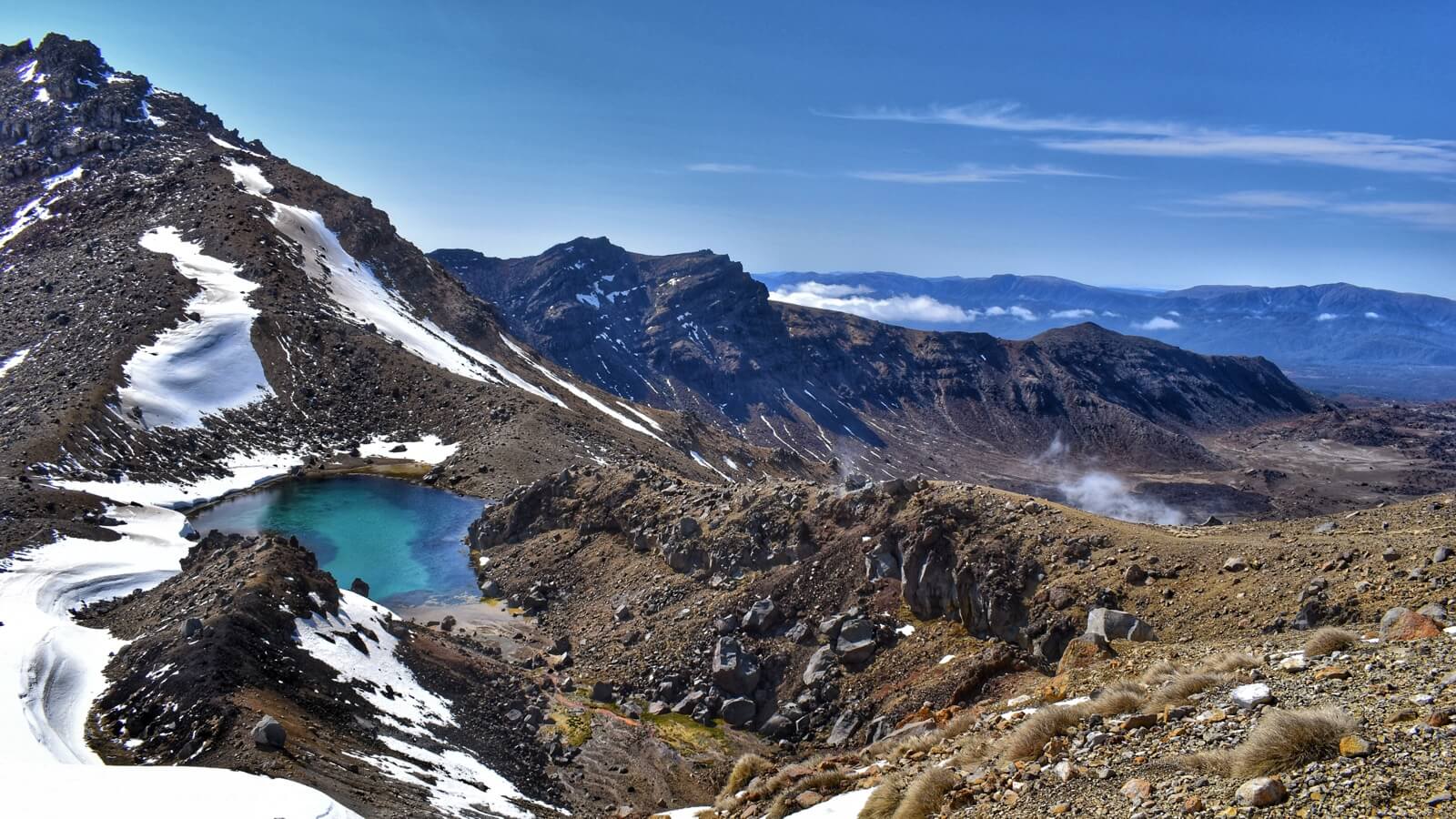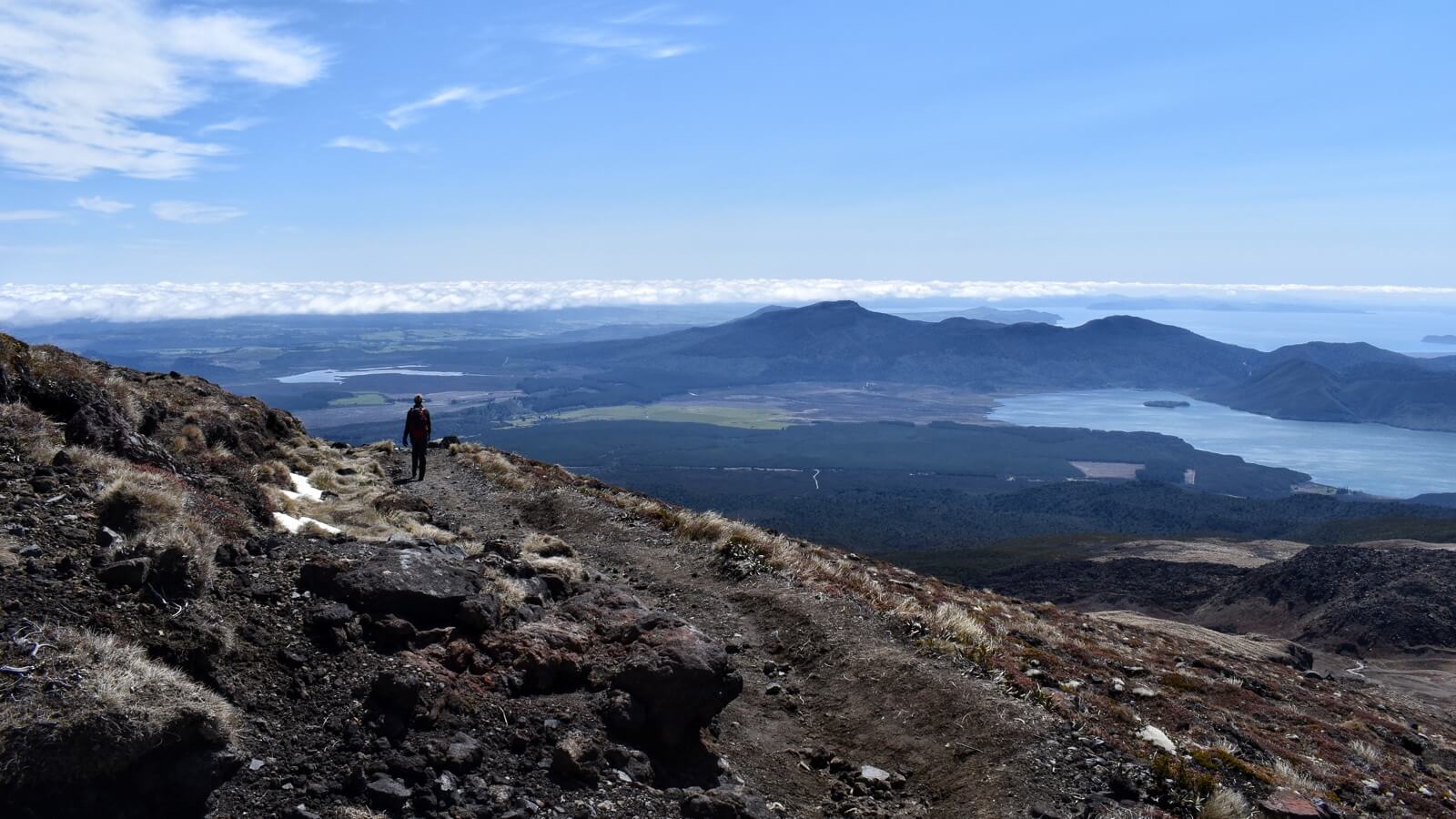We'd detoured around the north island, waiting for a good weather window in Tongariro National Park for a week and it finally looked like we had one. So with gear for all weather (including crampons) we headed off to tackle New Zealand's best day hike and Mount Doom.
Originally, we had booked a guide, since the people at the Department of Conservation had told us that with all the snow and ice we would need help to get over the crossing alive. But when we called the guide on the day before to confirm, she told us that we wouldn't need her. ‘There is not that much snow, just enough to make it pretty but not a lot on the paths. You sound confident!’ And so we exchanged the fully guided tour for a bus and some crampons rented from a backpackers’ hostel.
Worried about missing our bus, we got up in the dark for a bigger breakfast than usual. Once we got to the backpackers hostel, about 20 others were waiting while the last people picked out their crampons. In our group, there seemed to be a mixed level of seriousness: from hikers with poles, gators and avalanche transmitters to a Chinese girl in pink trainers whose boyfriend asked whether there would be water on the trail. There would not.

The sunny day we'd been promised by our weather oracles didn't seem to have materialised. Where there should have been mountains, there was only cloud. The bus ride drove for about half an hour into that cloud, giving a misty, autumnal view of the park. The driver had to dodge some other buses that had already dropped their load of eager hikers. Clearly there were more people who had been waiting around for an opportunity like us, but because of the season it would not be as busy as in summer, when apparently up to 2000 people walk the 19.4 km track in a day.
The driver had other worries this day: when she gave her brief introduction of the walk, she explained that she had to tell us not to touch the water because of a new Maori rule. ‘They have something new every week. I don't know what you were going to do with the water, you can't drink it anyway, but you can't touch it.’
After that little insight in the relationship between the many users of the land, we started walking. Amazingly, we could see the clouds being blown away when we got closer to the mountains. For the rest of the trip, they would only be below and behind us, giving us a clear view of the rest of the walk.

The first serious climb was the ‘Devil's staircase’, a steep climb up to the first volcanic crater. For ease of use for the hikers this has now been turned into an actual staircase, so it was more tiring than difficult. After that climb, it was up and down through various craters at altitude, and winter had started. The mountaintops around us were snowy, the path on a long flat crossing was snowed over, and the famous emerald lakes were frozen over. The snow added to the drama, but the views were otherworldly anyway. Volcanic rocks, moon-like plains, huge mountains, Mount Taranaki peaking out over the blanket of clouds in the distance…If not for the sharp cold wind we could have just been pirouetting around for hours to take everything in.

The snow had started melting and was soft enough to walk and climb on, so we only tried on the crampons to add to our mountaineering skill sets. The Chinese girl found a different use for them, and wore them over her trainers when going down a steep hill of scree. ‘It's very hard!’ she said, smiling. Nobody seemed to be in serious trouble though, and when we looked behind us at one point, we could see a steady stream of hikers walk over a white plain, like humans coming to explore a new planet.

We left winter behind us for spring when we climbed out of the last crater and into a more gentle sunny descent. The last half of the walk is all downhill in a long meandering track, with great views over a large part of the North Island. We could see all of lake Taupo, and with a bit of imagination we could see Superloo glittering in the distance. The wind was still present, but halfway down the descent we could stop at a shelter for some lunch. The space soon filled up with more resters, but there was not a lot of talking. Possibly everyone was silenced by the notion that they would probably not see more interesting hikes any time soon, so they might as well just pack it in.
In the final part of the walk, the views stop as you get below the tree line, and we started to notice that we were tired. The ups and downs of the forest walk seemed a bit less interesting without a new great view waiting for us behind every hill. As our grumpy Dutch guidebook said: 'rather boring'. When we finally reached the car park where we would wait for the bus back, the Chinese couple was already there. Never again will we underestimate pink trainers.
And that was it! Four seasons and several planets in a day. And no more circling Tongariro waiting for a good day for the crossing: we're off to Wellington to explore the capital before going to the South Island.